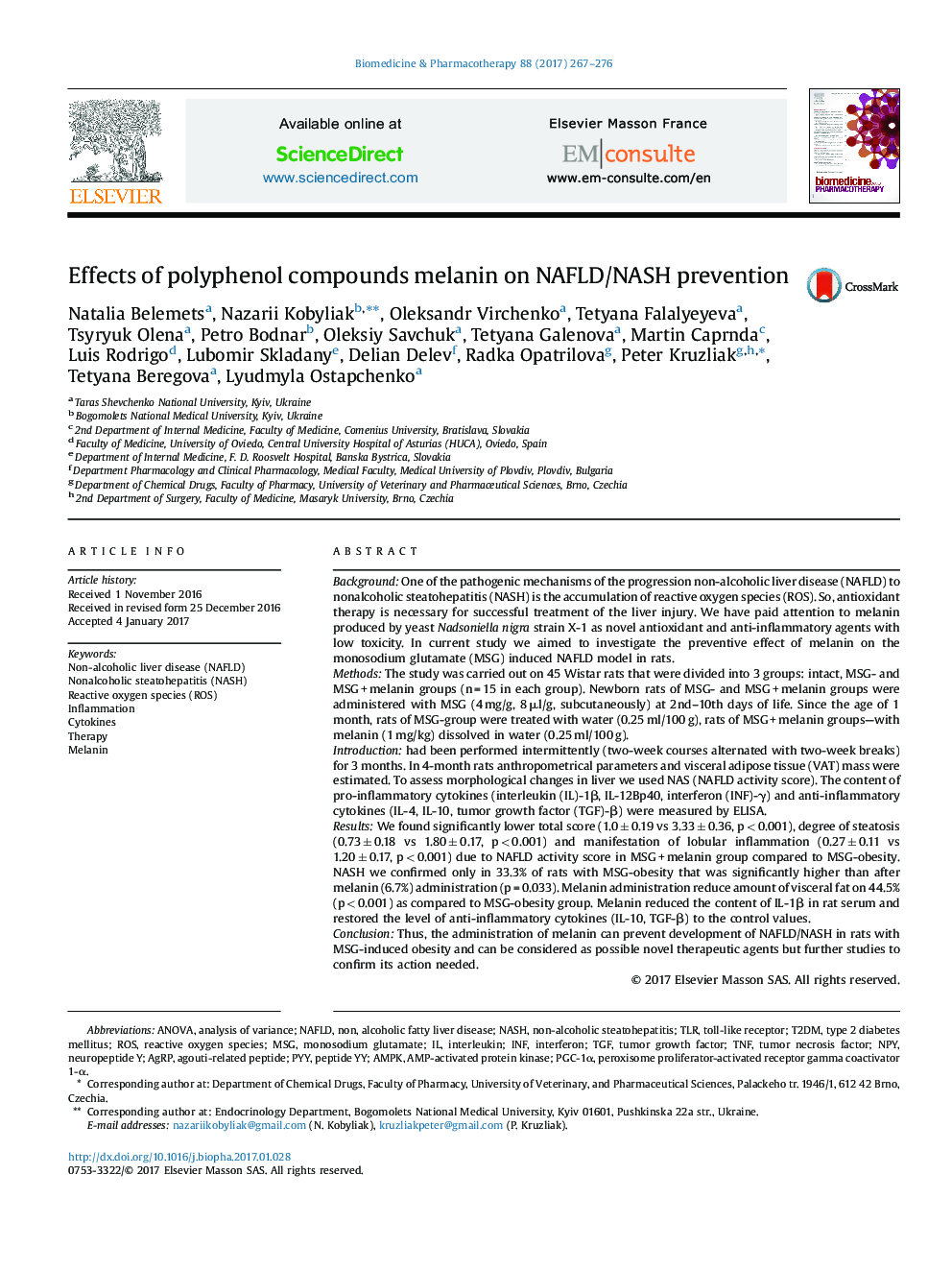| Article ID | Journal | Published Year | Pages | File Type |
|---|---|---|---|---|
| 5553145 | Biomedicine & Pharmacotherapy | 2017 | 10 Pages |
BackgroundOne of the pathogenic mechanisms of the progression non-alcoholic liver disease (NAFLD) to nonalcoholic steatohepatitis (NASH) is the accumulation of reactive oxygen species (ROS). So, antioxidant therapy is necessary for successful treatment of the liver injury. We have paid attention to melanin produced by yeast Nadsoniella nigra strain X-1 as novel antioxidant and anti-inflammatory agents with low toxicity. In current study we aimed to investigate the preventive effect of melanin on the monosodium glutamate (MSG) induced NAFLD model in rats.MethodsThe study was carried out on 45 Wistar rats that were divided into 3 groups: intact, MSG- and MSG + melanin groups (n = 15 in each group). Newborn rats of MSG- and MSG + melanin groups were administered with MSG (4 mg/g, 8 μl/g, subcutaneously) at 2nd-10th days of life. Since the age of 1 month, rats of MSG-group were treated with water (0.25 ml/100 g), rats of MSG + melanin groups-with melanin (1 mg/kg) dissolved in water (0.25 ml/100 g).Introductionhad been performed intermittently (two-week courses alternated with two-week breaks) for 3 months. In 4-month rats anthropometrical parameters and visceral adipose tissue (VAT) mass were estimated. To assess morphological changes in liver we used NAS (NAFLD activity score). The content of pro-inflammatory cytokines (interleukin (IL)-1β, IL-12Bp40, interferon (INF)-γ) and anti-inflammatory cytokines (IL-4, IL-10, tumor growth factor (TGF)-β) were measured by ELISA.ResultsWe found significantly lower total score (1.0 ± 0.19 vs 3.33 ± 0.36, p < 0.001), degree of steatosis (0.73 ± 0.18 vs 1.80 ± 0.17, p < 0.001) and manifestation of lobular inflammation (0.27 ± 0.11 vs 1.20 ± 0.17, p < 0.001) due to NAFLD activity score in MSG + melanin group compared to MSG-obesity. NASH we confirmed only in 33.3% of rats with MSG-obesity that was significantly higher than after melanin (6.7%) administration (p = 0.033). Melanin administration reduce amount of visceral fat on 44.5% (p < 0.001) as compared to MSG-obesity group. Melanin reduced the content of IL-1β in rat serum and restored the level of anti-inflammatory cytokines (IL-10, TGF-β) to the control values.ConclusionThus, the administration of melanin can prevent development of NAFLD/NASH in rats with MSG-induced obesity and can be considered as possible novel therapeutic agents but further studies to confirm its action needed.
